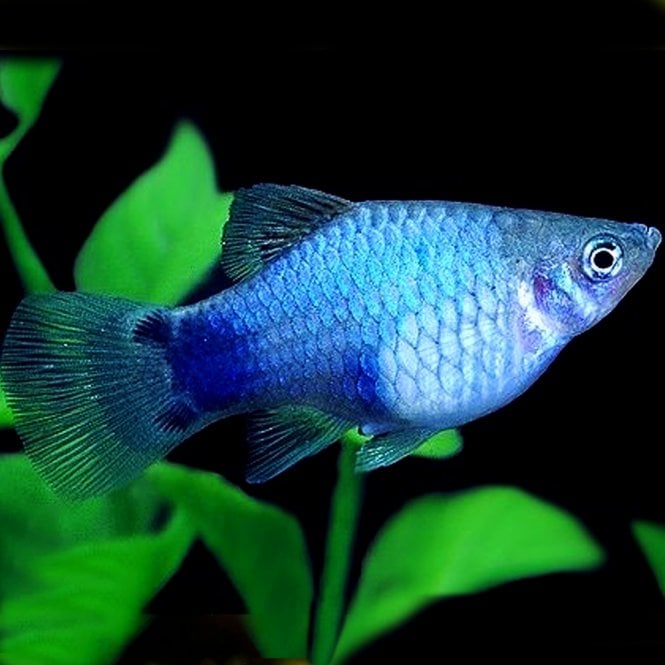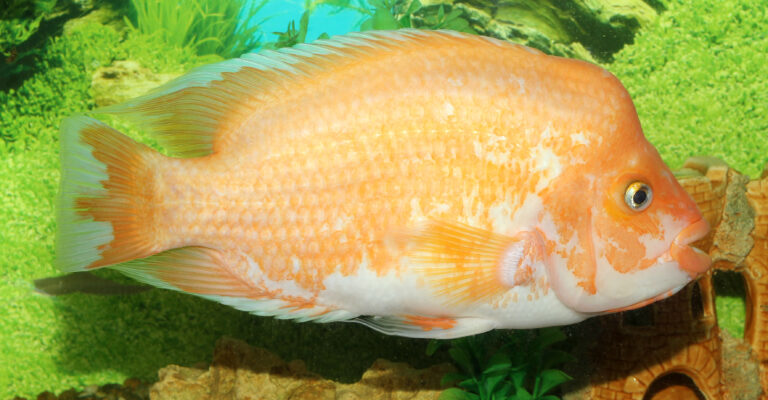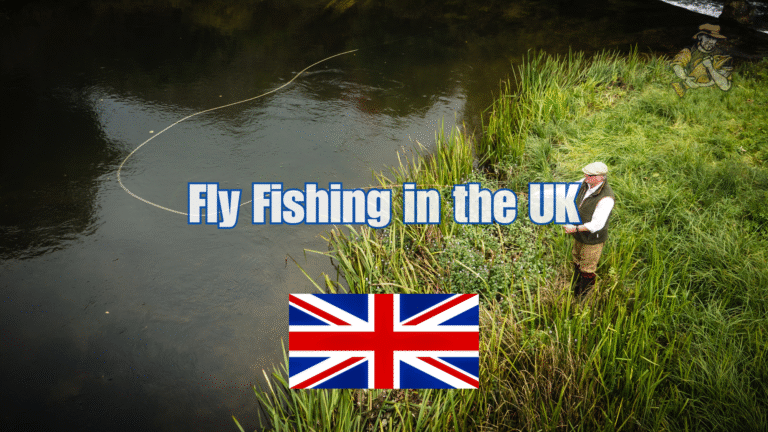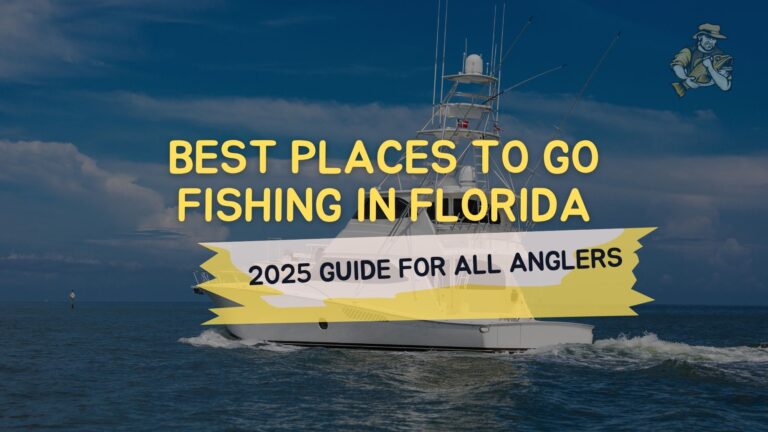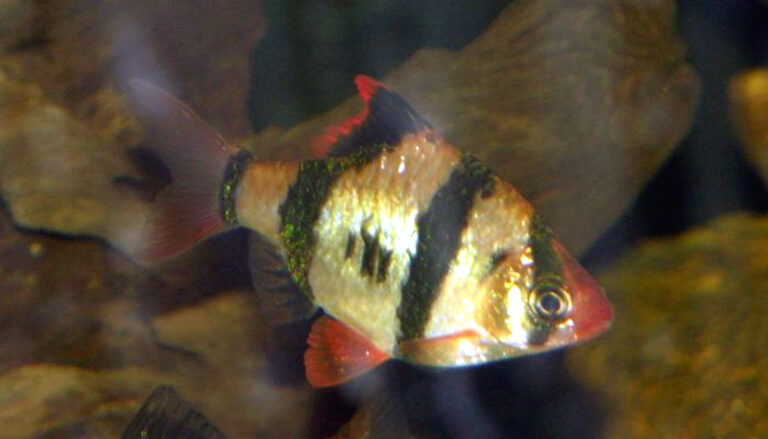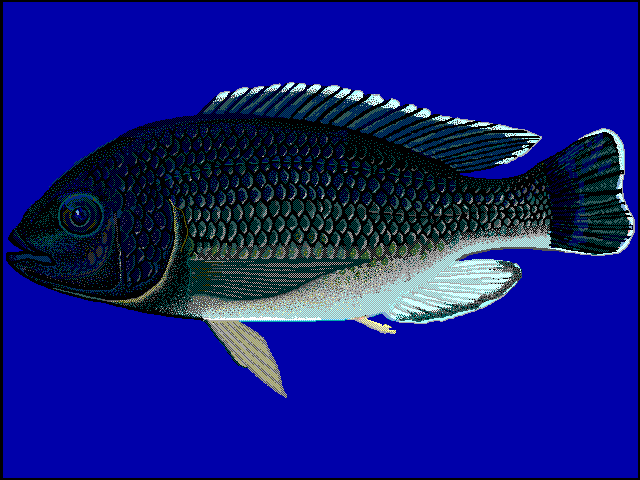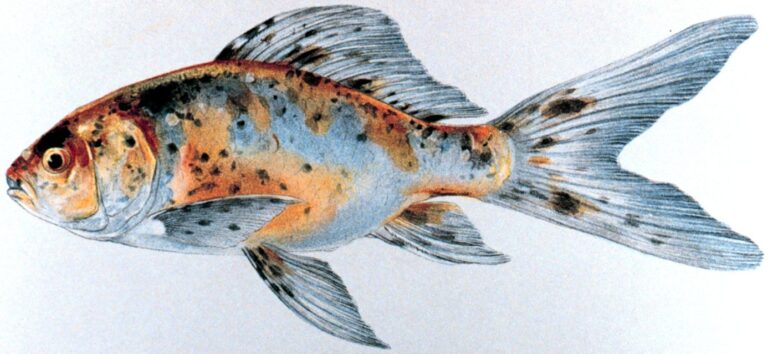Reading Water Temperature: Seasonal Cues for Better Fishing
By Adam Hawthorne | Last Modified: May 14, 2025
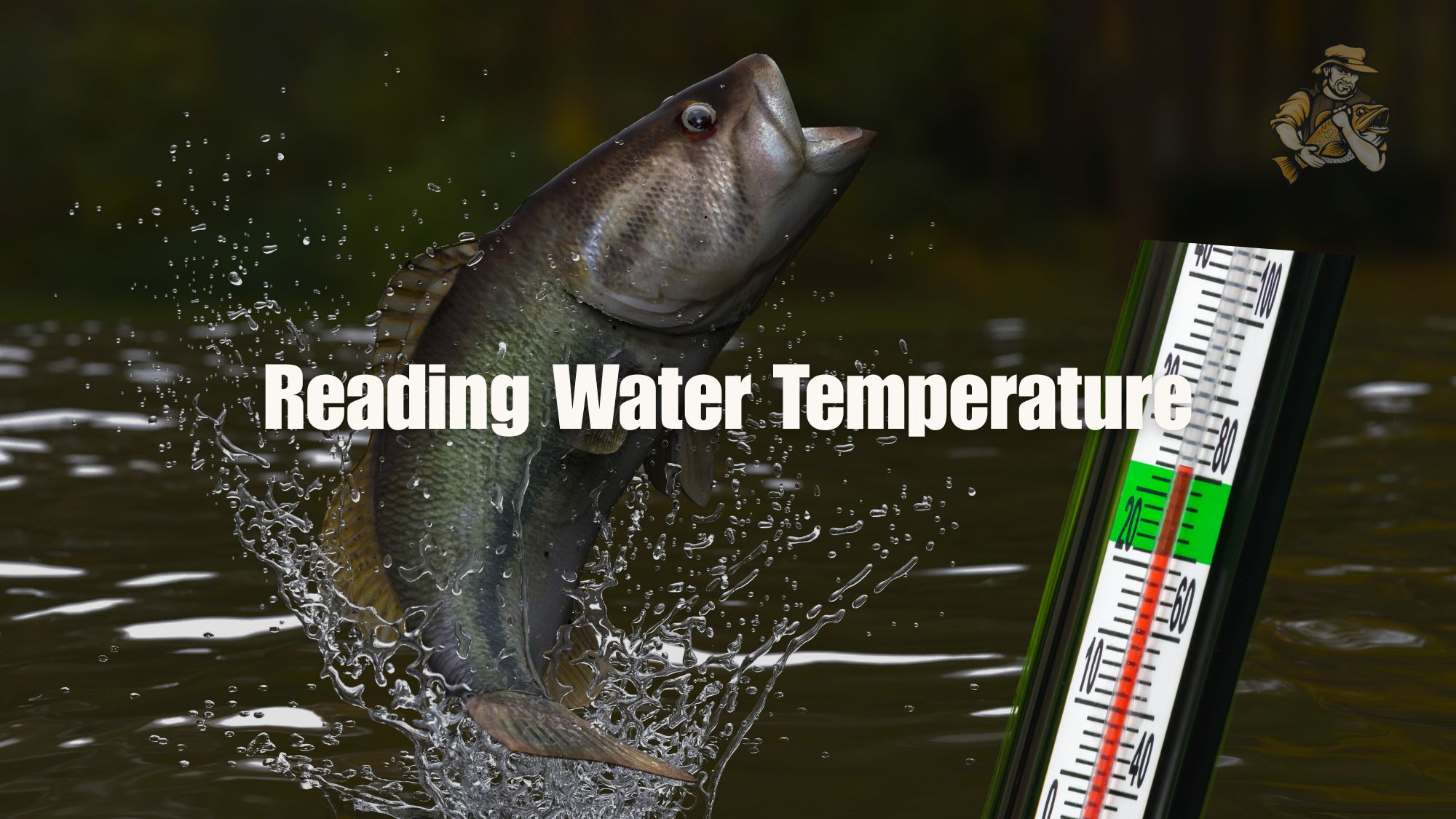
I’ve spent more mornings than I can count staring at a thermometer clipped to my fishing line, watching those tiny numbers drift up or down as it sinks. Some guys obsess over their fancy electronics or custom rod setups – me, I’m a temperature junkie. After 30 years of chasing everything from bluegill to muskie across Michigan’s waters, I’ve learned that those seemingly minor temperature shifts can mean the difference between a cooler full of fish and a long day of excuses.
Last April, I was out with my buddy Dave on Lake St. Clair. Three other boats were fishing the same flat we were, all working similar baits. But we noticed something – a subtle 3-degree temperature break running through the area. We focused solely on that transition line and caught 17 smallmouth while the other boats maybe had 5 between them. That’s the power of understanding water temperature.
Let’s break down exactly how to read water temperature and what it means for your fishing, regardless of the season.
Why Water Temperature Controls Fishing Success More Than Any Other Factor
Most casual anglers fixate on weather, barometric pressure, or moon phases – and those all matter to some degree. But in my experience, nothing, and I mean absolutely nothing, impacts fish behavior more consistently than water temperature.
Fish are cold-blooded creatures, which means their metabolism and activity levels are directly tied to the temperature of their environment. Too cold, and they become lethargic, barely able to chase prey. Too warm, and oxygen levels drop, forcing them to either relocate or significantly reduce activity.
Here’s what few anglers truly understand: fish don’t just react to the absolute temperature – they respond dramatically to temperature CHANGES. A stable 58 degrees might produce consistent fishing for weeks, but when that temperature drops to 55 or climbs to 61, you’ll often see a feeding frenzy as fish adjust to their changing environment.
I keep logs for all my fishing trips, and after reviewing patterns over decades, the correlation between temperature changes and catch rates is undeniable. The guys who consistently catch fish aren’t just lucky – they’re the ones monitoring water temperature like a hawk.
Different Species, Different Temperature Preferences
Not all fish react the same way to water temperature. Here’s a quick breakdown of ideal temperature ranges for common species I target:
- Largemouth Bass: 65-75°F
- Smallmouth Bass: 60-70°F
- Walleye: 55-70°F
- Pike: 55-65°F
- Trout (most species): 45-60°F
- Muskie: 57-68°F
- Panfish (Bluegill, Crappie): 60-75°F
These aren’t just textbook numbers. I’ve verified them through countless hours on the water. When my son Tommy caught his first true trophy smallmouth (a 5.2-pounder from Grand Traverse Bay), the water temperature was exactly 66 degrees. The fishing shut down completely when a cold front pushed through and dropped the temperature to 58 two days later.
My neighbor swears his “magic temperature” for big crappie on Lake Leelanau is 74 degrees. I thought he was being weirdly specific until he showed me his fishing journal with dates, temperatures, and catch rates covering 15 years. Sure enough, his biggest days all clustered around that exact temperature.
Essential Tools for Reading Water Temperature (Beyond the Basics)
I’m not going to recommend you go drop hundreds on specialized equipment. That said, having the right tools makes a huge difference. Here’s what I use:
Basic Options (Budget-Friendly)
- Clip-on Liquid Thermometers – Under $10 at most tackle shops. These simple devices clip to your fishing line and give you a reading at whatever depth you lower them to. They’re surprisingly accurate but take a minute or two to stabilize.
- Digital Pocket Thermometers – $15-25 range. I keep one in my tackle box at all times. Just dip it in the water and get an instant reading. The downside is you’re only measuring surface temperature.
- Marked Fishing Line – This is an old trick I learned from my grandfather. Mark your line at 5-foot intervals, then lower your thermometer to specific depths. Over time, you’ll build a temperature profile of the entire water column.
Mid-Range Options
- Handheld Fish Finders with Temperature – The Deeper portable sonar units have become popular, and for good reason. They not only show you fish but display temperature at various depths. I was skeptical until my fishing buddy insisted I try his. Now I own two.
- Infrared Thermometers – Surprisingly useful for quickly scanning surface temperatures across a large area. I can shoot readings from multiple spots while idling across a flat without having to stop and dip a thermometer repeatedly.
Advanced Options (For the Committed)
- Boat-Mounted Electronics – Modern fish finders display temperature graphs across the entire water column. When I finally upgraded my electronics in 2021, it was like fishing with X-ray vision. I could track temperature breaks that were completely invisible before.
- Temperature Logging Systems – Some serious anglers I know have installed systems that continuously log temperature at multiple depths throughout the day. Excessive? Maybe. But one guide I know on Lake Michigan swears it doubled his catch rate for clients.
I made the mistake of buying a premium “fishing thermometer” marketed specifically to anglers for nearly $60. Complete waste of money – it was just a standard digital thermometer with a fancy fishing paint job. A $15 aquarium thermometer works just as well and is often more accurate.
Reading Surface Temperature (What Most Anglers Miss)
Surface temperature is the easiest to measure but can be deceptive if you don’t know what you’re looking for. Here are some patterns I’ve discovered over the years:
Morning vs. Afternoon Patterns
Surface readings fluctuate dramatically throughout the day, especially in summer. On Saginaw Bay last July, I recorded 67°F at 5:30 AM, but by 2:00 PM, that same spot had reached 78°F. The walleye bite completely shut down as the temperature climbed.
What many anglers miss is the “rebound effect” – when temperatures start dropping again in late afternoon, fish often resume feeding. I caught my limit of walleye that same evening around 7:30 PM when the surface had cooled back to 72°F.
Wind Effects on Surface Temperature
Pay close attention to wind direction on large bodies of water. A sustained wind can push warm surface water to one side of a lake, creating temperature differences of 5-10 degrees between windward and leeward shores. This is especially pronounced on the Great Lakes.
Last summer on Lake Michigan near Frankfort, the north shore was reading 59°F while just a mile south, we found water at 67°F. The salmon were stacked in that transition zone like they were on sale.
Finding Thermal “Edges”
One technique I’ve refined over the years is mapping thermal edges – boundaries where temperatures change over a short distance. These spots act like magnets for predatory fish.
When fishing new water, I’ll take readings every 100 yards or so along the shoreline, marking temperature on my phone’s map app. After 5-6 readings, patterns usually emerge. I’ve caught more big bass fishing these invisible temperature lines than any physical structure I’ve ever targeted.
Subsurface Temperature Patterns That Change Everything
Surface readings tell only part of the story. The real magic happens when you understand what’s going on beneath the surface. This is where most casual anglers are completely in the dark.
The Thermocline: Nature’s Fish Magnet
A thermocline is a layer where temperature changes rapidly compared to the water above and below it. During summer months on most Michigan lakes, you’ll find this layer somewhere between 10-30 feet deep.
Finding the thermocline completely changed my approach to summer fishing. Bass and walleye often suspend right above it, while species like trout and salmon may hold just below it where cooler, more oxygen-rich water resides.
To locate the thermocline without fancy electronics, I use the “temperature profile” method. I take readings at 5-foot intervals, starting at the surface and working down. When you hit a depth where the temperature drops more than 2 degrees within a 5-foot span, you’ve found the thermocline.
On Lake Charlevoix last August, the surface was a warm 76°F, but at 22 feet, it suddenly dropped to 61°F. That narrow band at 20-25 feet was holding massive schools of perch and the walleye that were feeding on them.
Spring and Fall Turnover Effects
Twice a year, most lakes experience “turnover” – when surface waters cool (fall) or warm (spring) to match deeper water temperatures, causing the entire water column to mix.
During turnover, fish patterns become notoriously difficult to predict. I’ve had some of my worst fishing days during peak turnover, but I’ve also experienced incredible fishing just before and after.
The key is recognizing when turnover is occurring. If you’re taking temperature readings at different depths and notice they’re nearly identical from top to bottom, the lake is likely turning over. During these periods (typically early-mid October and late April around here), I focus on areas where turnover happens last – usually the deepest parts of the lake or areas with current.
Cold Water Refuges (Summer Strategy)
During the hottest parts of summer, fish often seek out cold water refuges – areas where cooler water is available due to springs, creek inflows, or deep holes.
For years, I completely overlooked a small creek that feeds into the south end of Mullett Lake. One brutally hot July day, when nothing was biting elsewhere, I noticed a 7-degree temperature difference where this spring-fed creek entered the main lake. The area was loaded with smallmouth and pike taking advantage of this thermal refuge.
Now I keep a “summer refuge” list of spots on each lake I fish – areas where cooler water can reliably be found during heat waves. These spots have saved countless trips during those tough dog days of August.
Seasonal Water Temperature Patterns You Can Bank On
Now let’s break down how to apply water temperature knowledge throughout the fishing season. I’ve found these patterns to be remarkably consistent across most of Michigan’s waters.
Early Spring (Ice-Out to 55°F)
This is a tricky period. As water temperatures climb from the high 30s into the 50s, fish begin their transition from wintering areas to pre-spawn locations. Temperature becomes critically important during this period.
I focus on areas that warm fastest – shallow, dark-bottomed bays with southern exposure. These spots can be 5-10 degrees warmer than the main lake, attracting fish like a magnet. My go-to early spring spot on Burt Lake warms up nearly two weeks before similar-looking areas on the north end of the lake, simply because it gets more direct sunlight.
In rivers, even tiny temperature increases matter. One April morning on the Au Sable, I found a section that was 42°F while most of the river was still at 38-39°F. That slightly warmer stretch held nearly every active steelhead in the system.
The magic temperature for many species to really become active is:
- Pike: 45-48°F
- Walleye: 42-45°F
- Smallmouth: 48-52°F
- Largemouth: 50-55°F
Spawning Periods (Temperature Triggers)
Fish don’t spawn based on calendar dates – they spawn when water temperatures hit specific ranges. Knowing these trigger points allows you to predict spawning activity with remarkable accuracy:
- Pike: 40-45°F
- Walleye: 43-48°F
- Crappie: 56-60°F
- Smallmouth Bass: 60-65°F
- Largemouth Bass: 62-68°F
- Bluegill: 65-75°F
I’ve watched bass spawning in one cove while bass in another cove of the same lake aren’t even close to spawning, solely due to a 4-5 degree temperature difference between the areas.
One year on Traverse Bay, we found smallmouth spawning a full two weeks earlier on the east side compared to the west side, all because of warmer water temperatures. When I shared this with other anglers, most didn’t believe me until they saw it themselves.
Summer Patterns (70°F+)
Once summer heat establishes and water temperatures climb above 70°F in most lakes, fish behavior changes dramatically. This is when understanding the thermocline becomes essential.
In most of our natural lakes, I’ve found that the most consistent summer fishing occurs:
- Early mornings when surface temperatures are 3-5 degrees cooler than midday
- Along drop-offs where fish can easily move between warm and cool water
- Near inflowing creeks that create temperature breaks
The biggest mistake I see summer anglers make is fishing strictly based on time of day rather than temperature. There are days when the bite actually improves during midday if clouds move in and drop surface temperatures by just a couple of degrees.
I’ll never forget a July tournament on Lake St. Clair where most competitors were off the water by 10 AM assuming the bite was done for the day. A small storm system moved through around noon, dropping water temperatures from 79°F to 74°F in just a couple hours. Those of us who stayed out absolutely hammered the smallmouth that afternoon.
Fall Turnover and Beyond (Below 60°F)
As water cools in fall, fish behavior becomes more dictated by feeding than temperature comfort. However, the rate of cooling makes a huge difference in activity levels.
I’ve documented this pattern dozens of times: when water temperatures drop slowly (1-2 degrees per week), fish adjust gradually and feeding remains consistent. When temperatures plummet quickly (5+ degrees in a few days), fish often shut down completely until they acclimate.
This is why September and early October can be so hit-or-miss in Michigan. A single cold front can drop shallow water temperatures by 8-10 degrees overnight. Last fall, Grand Traverse Bay went from 67°F to 58°F in just three days after a massive cold front. The smallmouth bite was nonexistent for nearly a week afterward.
The most consistent fall fishing happens when you can find stable water temperatures, even if they’re cooler. I often catch my biggest fish of the year when water temperatures stabilize in the mid-50s for pike and muskie, or mid-40s for big brown trout.
Temperature-Based Fishing Approaches That Actually Work
Now that we understand how to read temperature, let’s look at practical applications. These are techniques I’ve refined over decades that leverage temperature knowledge to consistently catch more fish.
The “First Warmth” Strategy (Early Season)
When lakes first start warming in spring, focus exclusively on the warmest water you can find, even if it’s only 1-2 degrees warmer than surrounding areas. This often means:
- Shallow, dark-bottomed bays
- Areas near warm water discharges
- North shores that receive more direct sunlight
- Wind-blown shores where warmer surface water concentrates
My best early-season pike fishing consistently comes from hitting the warmest available water, regardless of structure or cover. One April morning on Mullett Lake, I found a small bay that was 47°F while the main lake was still 39°F. That tiny area produced 11 pike in three hours.
The Thermocline Trolling Pattern (Summer)
Once you’ve identified the thermocline depth, try this approach that’s produced countless walleye, trout and salmon for me:
- Set lines to run at varying depths – one just above the thermocline, one right in it, and one just below
- Troll along contour lines where the thermocline intersects with structure
- When you catch a fish, adjust all lines to the productive depth
Last summer on Lake Huron, we found the thermocline at 37-40 feet. By focusing our presentation right at the 38-foot mark where it intersected with a long underwater point, we boated 14 lake trout in a single morning. Other boats trolling the same area at random depths struggled to catch anything.
The Temperature Break Hunt (All Seasons)
Temperature breaks are boundaries where water temperatures change over a relatively short distance. These breaks concentrate baitfish and, consequently, predators.
Here’s my system for finding these productive zones:
- Take surface temperature readings every 100-200 yards while moving across likely areas
- Mark spots where temperature changes by 2+ degrees
- Focus fishing efforts along these invisible “edges”
I can’t emphasize enough how productive this can be. During a bass tournament on Lake St. Clair, I found a subtle temperature break where 73°F water met 69°F water along a weedline. By focusing exclusively on this edge, I caught a 22-pound limit while most competitors struggled for half that weight.
The Cold Front Recovery Plan
Cold fronts are infamous for shutting down fishing, but understanding how water temperature impacts this phenomenon lets you adapt effectively.
After a cold front passes:
- Abandon shallow areas that have seen the most dramatic temperature drops
- Focus on transition zones between shallow and deep water
- Slow your presentation significantly
- Look for areas of more stable temperature (deeper water, wind-protected areas)
Following a brutal cold front that dropped water temperatures on Burt Lake from 72°F to 64°F overnight, I found walleye had abandoned their shallow weed pattern completely. By focusing on the first significant drop-off in 15-20 feet of water where temperatures were still a stable 68°F, I managed to save what would have otherwise been a fruitless trip.
Specific Equipment I Actually Use for Temperature Reading
I get asked about gear recommendations constantly, so here are the specific tools I rely on, from most to least used:
- Hawkeye Digital Thermometer – Simple, accurate, and only about $20. I’ve gone through three of these over the years, not because they break but because I eventually lose them overboard.
- Deeper Smart Sonar – When I’m fishing from shore or want detailed temperature readings at various depths, this castable fish finder has been a game-changer. It’s not cheap (around $200), but the data it provides is incredibly valuable.
- Hummingbird Helix with Temperature Graph – My boat’s main electronics. The temperature display overlay on the depth chart helps me identify thermoclines quickly.
- Cheap Aquarium Thermometers – I keep several of these $3 wonders in my tackle box. They’re surprisingly accurate and I don’t mind if they get lost.
One piece of equipment I wasted money on was a high-end “fishing-specific” digital thermometer that cost nearly $70. It wasn’t any more accurate than my $20 Hawkeye, and the battery compartment leaked after one season.
Regional Temperature Patterns for Great Lakes Anglers
If you’re fishing Michigan waters like I am, here are some region-specific temperature insights I’ve gathered over the years:
Northern Michigan Inland Lakes
Lakes like Burt, Mullett, and Torch typically develop thermoclines between 25-35 feet by mid-June. Their deep, clear waters mean temperature changes happen more gradually than in shallow lakes. Spring turnover usually completes by early May, while fall turnover typically occurs in late September to early October.
I’ve found the most productive summer pattern on these lakes is targeting the deep weedline where it intersects with the thermocline – usually in the 20-30 foot range by mid-July.
Lake St. Clair System
This relatively shallow system responds quickly to air temperature changes. I’ve recorded surface temperature swings of 8-10 degrees in a single day. The lake rarely develops a strong thermocline due to its shallow nature and constant water movement.
For summer fishing on St. Clair, I focus less on depth and more on locating subtle temperature breaks caused by current, wind, or cloudy vs. sunny areas. Some of my best days have come from finding areas just 2-3 degrees cooler than surrounding water during summer heat.
Great Lakes Near-Shore Patterns
Michigan’s Great Lakes shorelines experience dramatic temperature changes due to upwellings and wind patterns. I’ve seen Lake Michigan temperatures drop from 70°F to 45°F overnight when strong offshore winds push warm surface water out and cold deep water rises to replace it.
If you’re fishing the Great Lakes, always check multiple spots for temperature readings before settling on a location. Often the best fishing is right along temperature transition zones created by these upwellings.
Common Water Temperature Myths (That Cost You Fish)
Let me debunk some temperature-related fishing myths I hear constantly:
Myth 1: “Fish always prefer the warmest available water in spring”
This is only partially true. While fish seek warmer water in early spring, there’s a tipping point. Once temperatures exceed their preferred range, they’ll actually move to slightly cooler water. I’ve watched largemouth abandon 72°F shallows in favor of 65°F water along deeper weedlines in late spring.
Myth 2: “The thermocline is always at the same depth in the same lake”
The thermocline depth varies year to year, month to month, and even between different areas of the same lake. On Lake Michigan, I’ve found the thermocline at 30 feet near shore but at 60+ feet just a few miles out. You need to locate it each time you fish.
Myth 3: “Fish stop biting completely during turnover”
While fishing can be challenging during turnover, fish still eat. The key is finding areas less affected by turnover – typically the shallowest and deepest portions of the lake. Some of my best late-fall muskie fishing has come during peak turnover periods by focusing on shallow bays that stabilize quickly.
Myth 4: “You need expensive electronics to use temperature effectively”
Complete nonsense. While modern electronics make it easier, a $10 clip-on thermometer and some note-taking will give you 80% of the benefits of understanding water temperature. I fished for 20 years with just a basic thermometer before investing in advanced electronics.
Temperature Logging System That Improved My Catch Rate
One practice that dramatically improved my fishing success was implementing a simple temperature logging system. Here’s my approach:
- Keep a small notebook in your tackle box
- Record the date, location, species targeted, and water temperature at the start of fishing
- Take additional readings throughout the day, especially if the bite changes
- Note when fish are caught, at what depth, and the water temperature in that specific spot
- Review these logs before returning to the same location
After a few seasons, patterns emerge that are almost impossible to ignore. I discovered that my success rate for trophy-sized pike on Mullett Lake skyrocketed when surface temperatures were between 62-65°F, regardless of season, time of day, or weather conditions.
This isn’t fancy – just a small notebook with scribbled temperatures and catch notes. But this simple practice has probably doubled my fishing effectiveness over the years.
Adapting to Unusual Temperature Patterns
Sometimes, water temperatures behave in unexpected ways. Here’s how I adapt:
Spring Cold Snaps
When spring warming is suddenly interrupted by cold weather, fish often retreat from shallow areas but don’t return all the way to winter patterns. The key is finding intermediate depths with the most stable temperatures.
Last April, we had a week of 70°F weather followed by a brutal cold front that dropped air temperatures into the 30s. While many anglers returned to winter deep-water patterns with poor results, I found that targeting mid-depth points (8-12 feet) with slower presentations produced consistent catches despite the cold snap.
Summer Hot Streaks
During extended heat waves, many lakes develop abnormally warm surface temperatures that exceed the preferred range of most gamefish. Rather than fishing early and late, focus on finding temperature refuges – springs, deep weedlines, or areas with significant shade.
During the record-breaking heat of July 2018, surface temperatures on many Michigan lakes exceeded 85°F. I discovered a spring-fed bay on the east side of Burt Lake that remained a consistent 72°F while the rest of the lake was 82°F+. This small area held more catchable fish than the entire west side of the lake.
Fall Temperature Crashes
Rapid cooling in fall can shut down fishing temporarily, but certain areas cool more slowly than others. Focus on:
- Deep flats adjacent to shallow spawning bays
- Channel areas with current
- Wind-protected bays with dark bottoms that retain heat
After a severe cold front last October dropped water temperatures from 61°F to 49°F in just two days, I found that the north shoreline of Saginaw Bay, which was protected from the north winds, had maintained temperatures around 56°F. The walleye fishing there remained excellent while the rest of the bay was virtually dead.
FAQs About Reading Water Temperature
Does water temperature affect fish feeding more than weather patterns?
In my experience, absolutely. I’ve caught fish during terrible weather conditions when the water temperature was ideal, but I’ve struggled on perfect weather days when temperatures were outside optimal ranges. That said, the combination of favorable weather AND ideal water temperature creates those legendary fishing days we all remember.
How quickly do fish adjust to temperature changes?
It depends on the rate of change. Gradual shifts of 1-2 degrees per day allow fish to adjust comfortably and often trigger feeding. Rapid changes of 5+ degrees in 24 hours typically shut down biting for 1-3 days as fish acclimate. I’ve thoroughly documented this pattern in my fishing logs across dozens of lakes.
Do I need to check temperature throughout the day?
On stable weather days, 2-3 checks are sufficient (morning, midday, late afternoon). During changing conditions or frontal passages, I check hourly, as I’ve seen temperatures change by 3-4 degrees in that timeframe. These transition periods often trigger brief but intense feeding windows.
How do spring and fall temperatures differ in how they affect fish?
This is fascinating – fish generally respond more positively to warming trends in spring than cooling trends in fall, even within the same temperature range. A 58°F reading in spring often produces more active fish than the same temperature in fall. This likely relates to lengthening vs. shortening daylight periods and their effect on fish metabolism. I’ve found this especially true with bass and pike.
Final Thoughts on Reading Water Temperature
After more than 30 years of fishing Michigan waters, I’ve come to see temperature as the single most important variable in predicting fish behavior. More important than weather, more important than lure selection, and often more important than location.
If I was limited to knowing just one piece of information before a fishing trip, I’d choose water temperature over any other factor. With that single data point, I could make educated guesses about where fish should be and how they’d likely behave.
The beauty of understanding water temperature is that it works everywhere – from farm ponds to the Great Lakes, from bluegill to muskie. The specific temperature preferences vary, but the principles remain constant.
Don’t make this more complicated than it needs to be. Start with a simple thermometer, take regular readings, and note patterns in relation to your catches. Before long, you’ll develop an intuitive sense of how temperature impacts your local fisheries.
I still have the small notebook where I recorded water temperatures during my first few years of serious fishing. Flipping through those pages now, the patterns seem obvious – but at the time, each correlation between temperature and fish activity felt like discovering a secret code. In many ways, that’s exactly what it was.

Meet Adam Hawthorne
I’m a lifelong fishing enthusiast who’s spent years exploring rivers, lakes, and oceans with a rod in hand. At Fishing Titan, I share hands-on tips, honest gear reviews, and everything I’ve learned about fish and ocean life, so you can fish smarter and enjoy every cast.
Share:

Meet Adam Hawthorne
I’m a lifelong fishing enthusiast who’s spent years exploring rivers, lakes, and oceans with a rod in hand. At Fishing Titan, I share hands-on tips, honest gear reviews, and everything I’ve learned about fish and ocean life, so you can fish smarter and enjoy every cast.
Related Articles
-
Blue Platy
The Blue Platy (Xiphophorus maculatus) stands as one of the most recognizable and culturally significant freshwater fish species in the aquarium trade. This small, vibrant…
-
Midas Cichlid
The Midas Cichlid (Amphilophus citrinellus) stands as one of Central America’s most recognizable and ecologically significant freshwater fish species. This robust cichlid commands attention through…
-
Fly Fishing in the UK: Top Rivers and Seasonal Patterns
After nearly three decades casting flies across waters from Michigan to Maine – and now spending several weeks each year exploring the UK’s rivers –…
-
7 Best Places to Go Fishing in Florida (2025 Guide for All Anglers)
Florida’s known as the Fishing Capital of the World for good reason. With over 7,700 lakes, 10,550 miles of rivers, and 2,276 miles of coastline,…
Fish Species
-
Marigold Swordtail
The Marigold Swordtail (Xiphophorus hellerii var. marigold) stands as one of the most vibrant and sought-after color variants within the freshwater aquarium trade. This selectively…
-
Tiger Barb
The Tiger Barb (Puntigrus tetrazona) stands as one of Southeast Asia’s most recognizable freshwater cyprinids, distinguished by its vibrant golden-orange coloration and distinctive black vertical…
-
Cichlid
Cichlids represent one of the most diverse and fascinating families of freshwater fish, encompassing over 1,700 species distributed across tropical and subtropical regions worldwide. These…
-
Shubunkin Goldfish
The Shubunkin Goldfish (Carassius auratus) represents one of the most popular and visually striking varieties of goldfish kept in aquariums and outdoor ponds worldwide. Originally…

